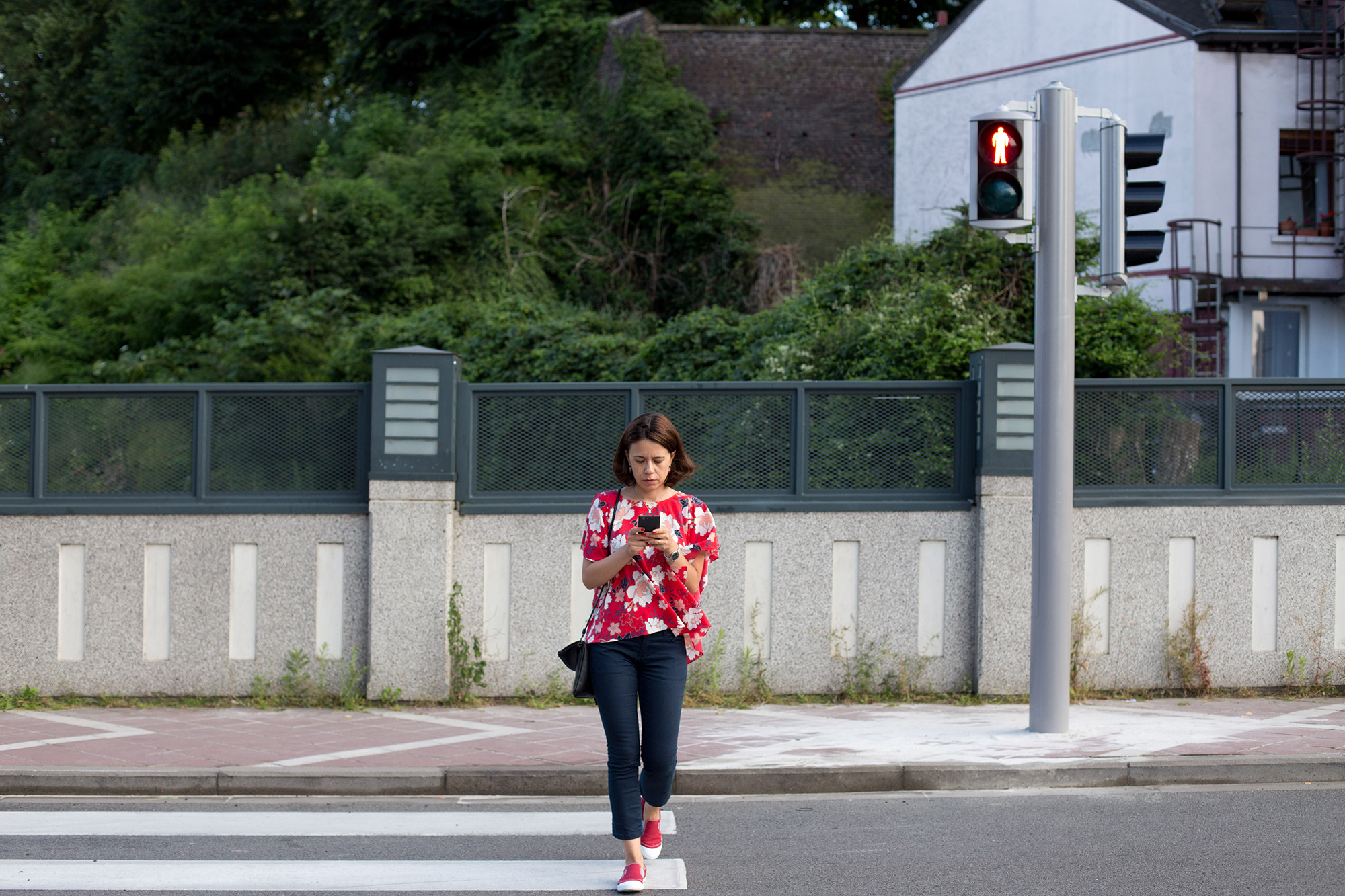Distracted pedestrians walk slower and are less steady on their feet: UBC study
Distracted drivers are responsible for more collisions in Canada than impaired drivers, but with smartphones becoming ubiquitous, distracted walking is also on the rise. Now, University of British Columbia engineers have analyzed just how mobile device use affects pedestrians, and their findings could help develop safer roads and autonomous cars in the future.

Researchers observed that a third of pedestrians were distracted by their cellphones, texting and reading or talking and listening.
Distracted drivers are responsible for more collisions in Canada than impaired drivers, but with smartphones becoming ubiquitous, distracted walking is also on the rise. Now, University of British Columbia engineers have analyzed just how mobile device use affects pedestrians, and their findings could help develop safer roads and autonomous cars in the future.
In a study published recently in Transportation Research Record, the researchers used automated video analysis to examine the movements and walking behaviour of pedestrians at a busy four-way intersection in Kamloops, B.C. The engineers mounted three cameras at the intersection, capturing the movements of 357 pedestrians over a two-day period.
“We found that more than a third of pedestrians were distracted by their cellphones, texting and reading or talking and listening,” said lead author Rushdi Alsaleh, a PhD candidate in civil engineering at UBC. “Distracted pedestrians had more trouble maintaining their walking speed and gait and took longer to cross the road, increasing the potential for conflict with vehicles.”
The movements of the distracted pedestrians also differed, depending on how they were using their devices. Those who were texting or reading took shorter steps without slowing their step frequency, while those who were talking on their phone took slower steps without changing the length of their strides. In addition, pedestrians distracted by texting or reading had more unstable movements and disruptions as they walked, compared to those conversing on their phones.
“When it came to interactions with vehicles, distracted pedestrians acted differently than those who were not distracted. To avoid oncoming vehicles, they reduced their speeds by adjusting their step frequency, while non-distracted pedestrians adjusted both their step frequency and the length of their steps,” said study co-author Mohamed Zaki, a research associate in the department of civil engineering at UBC.
These findings are key considerations for the development of safe driverless cars, according to researchers. By programming an autonomous vehicle to recognize distracted pedestrians from their walking patterns, it will be able to anticipate pedestrian behaviours and take the appropriate evasive actions to avoid an accident.
“Our study shows that using automated video analysis can map pedestrian behaviour more accurately than manual or semi-automated methods. Most pedestrian computer models do not account for the unusual walking behaviour of pedestrians distracted by phones,” said senior study author Tarek Sayed, a civil engineering professor who heads the transportation research group at UBC.
“Our research is focused on explaining how accidents occur on roads by better modelling the behaviour of people and cars on the road. We hope that our methods can be used to calibrate pedestrian simulation programs more accurately, helping planners to build safer roads and engineers to design smarter autonomous vehicles.”



